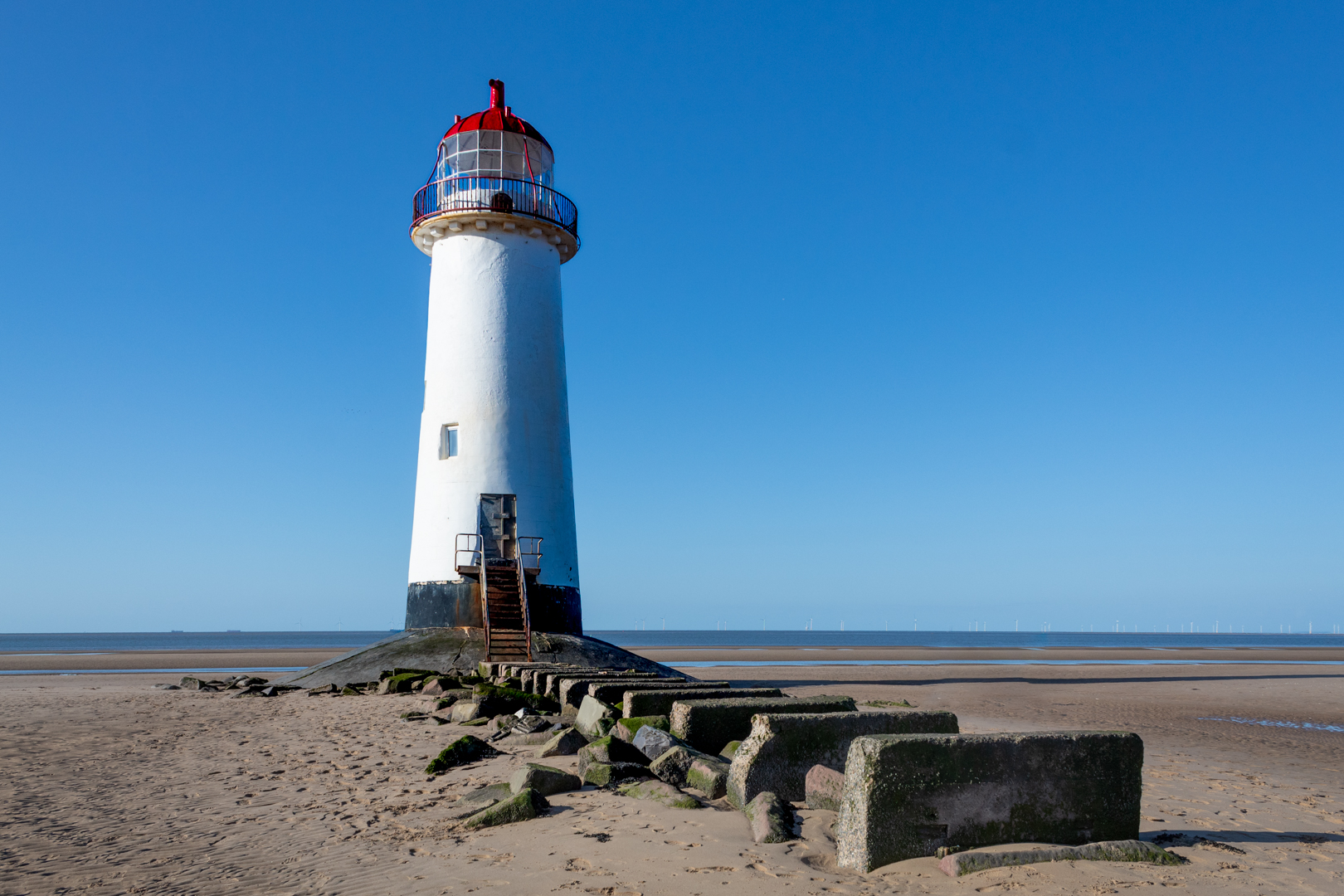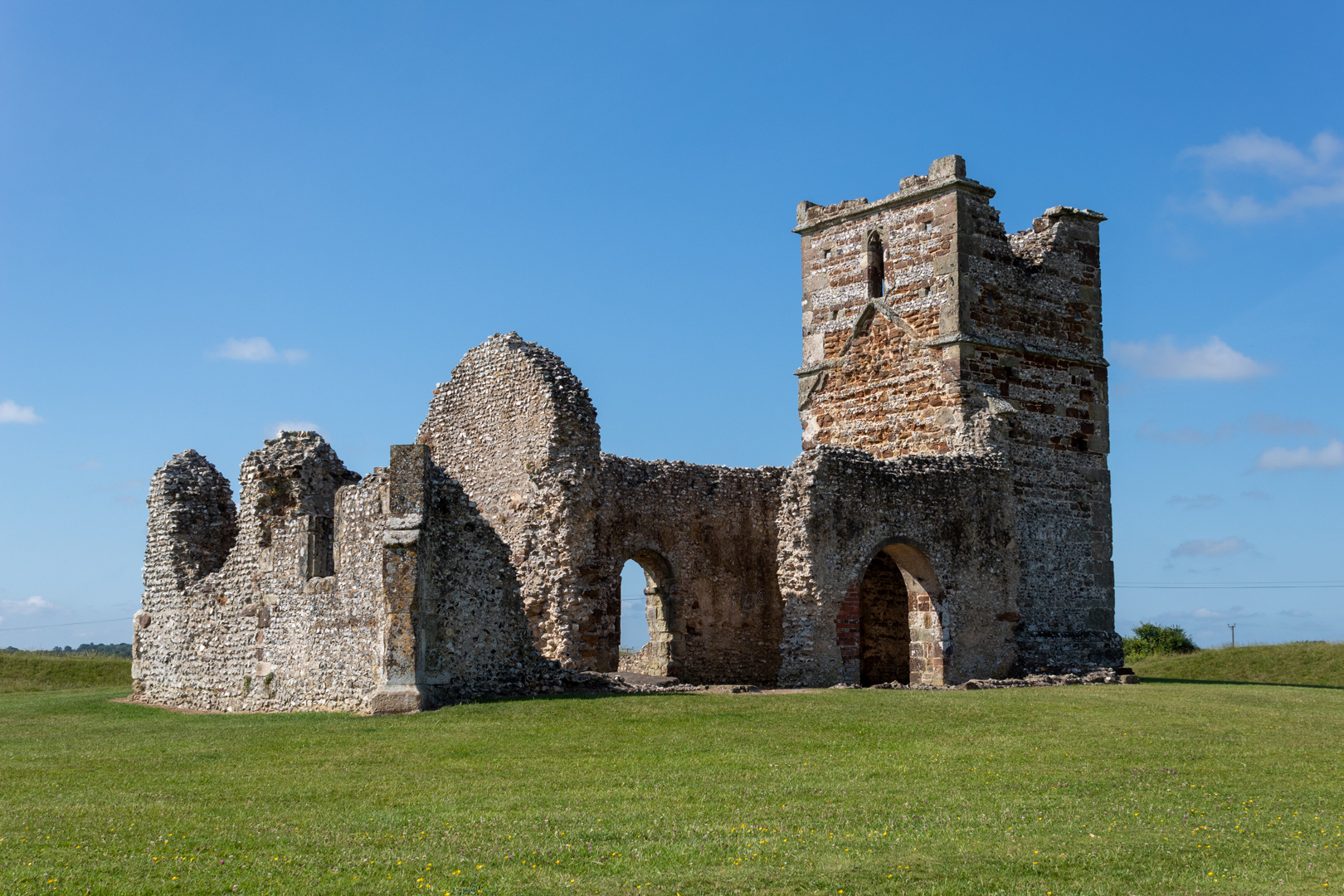The church's Norman origins are evident in the plain round arch that leads to the east end, or chancel, as well as in the round-headed arches of the arcade that separates the nave from the north aisle. The south door also exhibits Norman characteristics. At the west end, there is a 15th-century tower constructed from flint with stone bands, and the outline of the church roof is clearly visible on the eastern face of the tower.
The church was intentionally built in the heart of a former pagan site, illustrating how early Christians sought to convert the local population by repurposing existing pagan places of worship and incorporating them into their faith. Standing stones, which had been sacred for millennia, were reportedly broken apart and used in the church's construction, while others were toppled and buried. This "curious pairing" of the henge and the church symbolizes the transition from pagan to Christian worship.
 |
| Knowlton Church - Showing stone |
On the northern edge of the site, it is possible to see a stone left on the ground, a possible remnant of the Neolithic site? The top of another stone can been seen alongside which is buried well below the ground.
 |
| Knowlton Church - Yew Trees and tributes |
To the north of the church and possibly marking a northern entrance, two yew trees stand as a poignant reminder of those we cherish. People have been leaving heartfelt tributes and memorials, adorning the trees with ribbons and plaques that reflect their love and memories. It’s a touching tribute to the bonds that connect us all.
 |
| Knowlton Church |
A thriving community once existed in the village of Knowlton. However, the population was decimated by the Black Death in the late 15th century, leading the few surviving inhabitants to abandon the village and migrate elsewhere. Their houses fell into decay and were eventually plowed into the earth, with only vague traces of the foundations still visible to the west of the church. Despite this decline, Knowlton Church continued to attract a congregation for several more centuries, serving as a place of worship until the 17th century, or possibly even the 18th century, when its roof collapsed, after which it was abandoned. Today, it remains a "melancholy ruin."
 |
| Knowlton Church - N/W view |
Knowlton Church is well-known for its haunted history, with numerous individuals claiming to have encountered paranormal events there. A "spiritual paradox" is evident, as the attempts of early holy men to impose Christianity over pagan beliefs ultimately failed, leaving the church in ruins.
 |
| Knowlton Church - Detail |
There have been many reported sightings at the ruin.
A phantom horse and rider are said to gallop across the site in the dead of night, passing straight through the church.
A ghostly face has been witnessed peering from the top window of the tower.
The shade of a weeping woman, sometimes described as a nun, has been seen kneeling outside the church.
A phantom black dog has been sighted in the area.
A mysterious cloaked man has been spotted walking around the outside of the church, sometimes in daylight hours, before vanishing. Witnesses have commented on a "truly menacing aura" emanating from him.
In the 19th century, there is a story about thieves who tried to steal a large brass bell from the church tower. However, the bell fell into a river and could not be retrieved. It is said to ring from the ruined tower on stormy nights.
 |
| Knowlton Church - Detail |
Paranormal groups investigating the site have reported experiences of being surrounded by swirling white mist and hearing ethereal voices. In November 2020, paranormal investigator Jeff Higgins and his son, Stephen, visited the church at night and recorded what they believe to be a ghost on camera. They noticed movement from the left side of the frame to the right. Additionally, they recorded exceptionally high readings on their K2 and Mel meters, which measure electromagnetic fields, with the Mel meter reaching a level of 50.8, a reading described as "unheard of." Jeff believes this could indicate an "intelligent haunting," meaning the entity is aware of its surroundings and can interact with the environment. Some locals speculate that the henge itself serves as a "ghost trap," confining spirits within the circle.
Many people have said that the atmosphere was eerie on their visit or that they felt unsettled or uncomfortable here. I have to say I did not feel any of that; it just seemed a pleasant, quiet place.
Footer:Visit Information: -
Google Reference: -
50.89215795000064, -1.9670242050628584
What Three Words reference: -
///recapture.waking.starters
OS Details: -
Grid Ref: SU 02382 10281 elevation 193ft
Additional information.
Visiting is easy and there is a lay-by at the site (50.89156612457617, -1.9682256414495787).
Access easy from here.
The site is well signposted off the B3078 in the small village.
There are no facilities at this site.
A full list of blogs can be found at my website

























